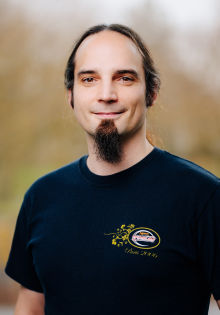First successful proof of quantum teleportation between two different quantum dots
An international research team involving Paderborn University has achieved a decisive breakthrough on the road to the quantum internet. For the first time, it has been possible to teleport the polarisation state of a single photon emitted from one quantum dot to a photon from another - spatially separated - quantum dot. In simpler terms, this means that the properties of one light particle (photon) could be transferred to another by means of teleportation. This step is particularly important for future quantum communication networks. In their experiments, the scientists used, among other things, a 270 metre long free-space connection. The results have now been published in the journal "Nature Communications".
Long-standing European collaboration leads to success
Over a period of around three years, a team of doctoral candidates and postdocs from Paderborn University worked intensively on the optical measurements, data evaluation and analysis. The Paderborn University group led by Prof Dr Klaus J?ns worked closely with the team led by Prof Dr Rinaldo Trotta from the Sapienza University of Rome, Italy. "The experiment impressively demonstrates that quantum light sources based on semiconductor quantum dots can represent a key technology for future quantum communication networks. The successful quantum teleportation between two different quantum emitters is an essential step towards scalable quantum relays and thus a practical implementation of the quantum internet," explains Prof J?ns, head of the "Hybrid Photonics Quantum Devices" group and board member of the Institute for Photonic Quantum Systems ("PhoQS") at Paderborn University.
Background: Entangled systems consisting of several quantum particles offer decisive advantages for quantum communication. Instead of a single state resulting from the conditions of a photon, an overall system consisting of several states is created. Such systems are used in communication, data security and quantum computing. During entanglement, certain properties of the photons are coupled together. One state corresponds to one piece of information that is processed further. "Until now, however, these photons came from one and the same source, i.e. the same emitter. Although there has been considerable progress in recent years, the use of different quantum emitters to realise a quantum relay between distant parties was previously unattainable," says Prof. J?ns.
More than ten years ago, Prof J?ns and Prof Trotta developed a roadmap on how quantum dots can be used as sources of entangled photon pairs for quantum communication and teleportation protocols. "This result shows that our long-term strategic planning has paid off," says Prof J?ns and adds: "The combination of excellent materials science, nanofabrication and optical quantum technology was the key to success."
Technological excellence at several research locations
The success is based on a Europe-wide research network: the quantum dots were developed with the highest precision at the Johannes Kepler University Linz. The nanofabrication of the resonators was carried out by partners at the University of Würzburg. Scientists from the Sapienza University of Rome carried out the quantum teleportation experiments, including a 270 metre long free-space link between two university buildings. GPS-supported synchronisation, ultra-fast single-photon detectors and active stabilisation systems compensated for atmospheric turbulence. The achieved teleportation fidelity of 82 ± 1 per cent, i.e. the quality with which the quantum states are maintained during teleportation, exceeds the classical limit value by more than ten standard deviations.
Outlook: First quantum relay with two deterministic sources
This success has paved the way for the next major stage: the demonstration of so-called "entanglement swapping" between two quantum dots. This is the first quantum relay with two deterministic sources of entangled photon pairs. To put this in context: deterministic quantum sources generate single photons relatively reliably - virtually at the push of a button. Until now, this has been associated with major challenges.
Simultaneous progress
Independently and almost simultaneously, a research team from Stuttgart and Saarbrücken has achieved a similar result using frequency conversion. Together, the two works mark an important milestone for European quantum research.
Read the paper: https://www.nature.com/articles/s41467-025-65911-9
This text was translated automatically.



